No Flowers Garden Ideas: Creative Alternatives for a Bloom-Free Yard
Creating a beautiful garden doesn’t always require flowers. Whether you’re looking to save on maintenance or prefer a different aesthetic, there are plenty of ways to design an eye-catching outdoor space without relying on traditional blooms.
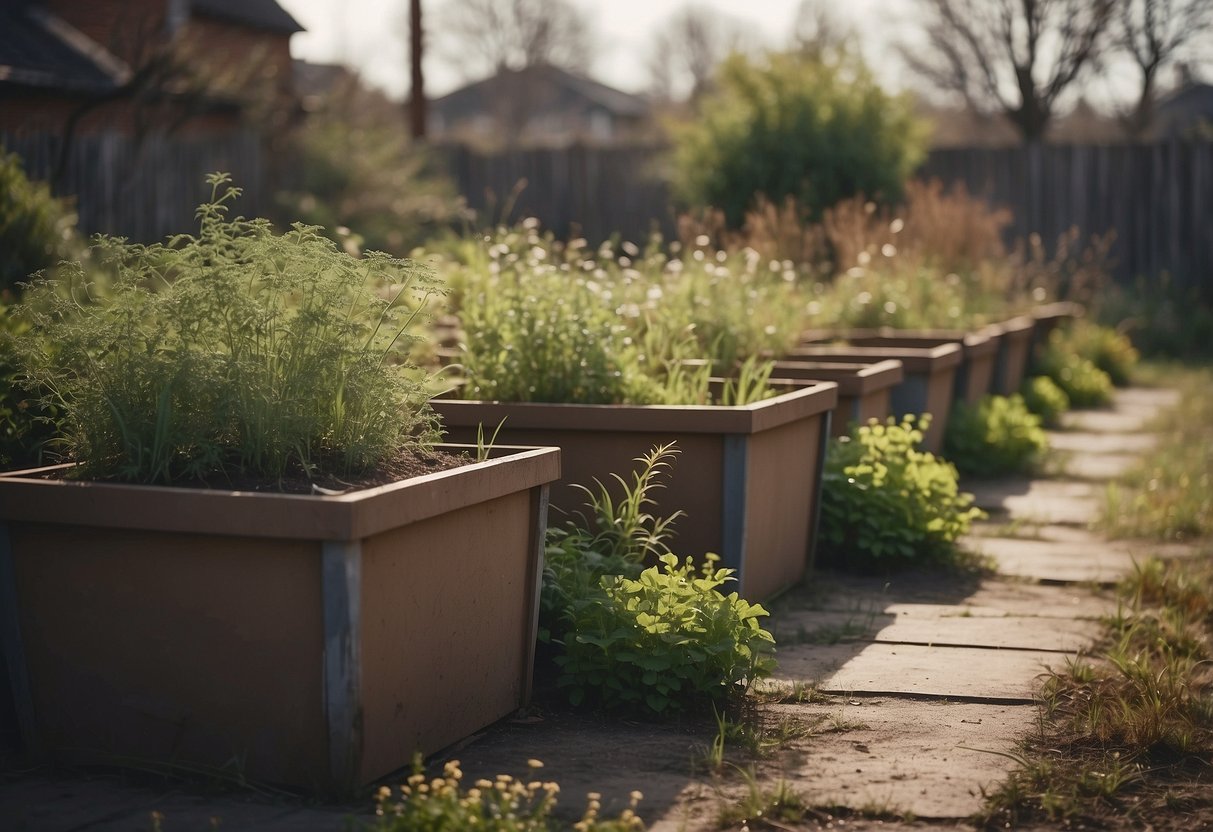
You can transform your garden with creative elements like furniture, lighting, and unique hardscape features. This article will explore various ideas to help you craft a stunning garden that’s both functional and visually appealing. Whether you have a small patio or a large backyard, you’ll find inspiration to make your space shine without a single flower.
1) Succulent Rock Garden

A succulent rock garden can transform your space with minimal effort. Start by choosing a mix of succulents like Echeveria and Sedum.
Stacked rocks add height and dimension. Arrange flat stones around your succulents for color and texture. A variety of stones, from large boulders to small gravel, creates visual interest.
These gardens are low-maintenance. Succulents thrive with little water, making them perfect for busy lifestyles. For more ideas, check out these beautiful succulent rock gardens.
2) Herb Spiral
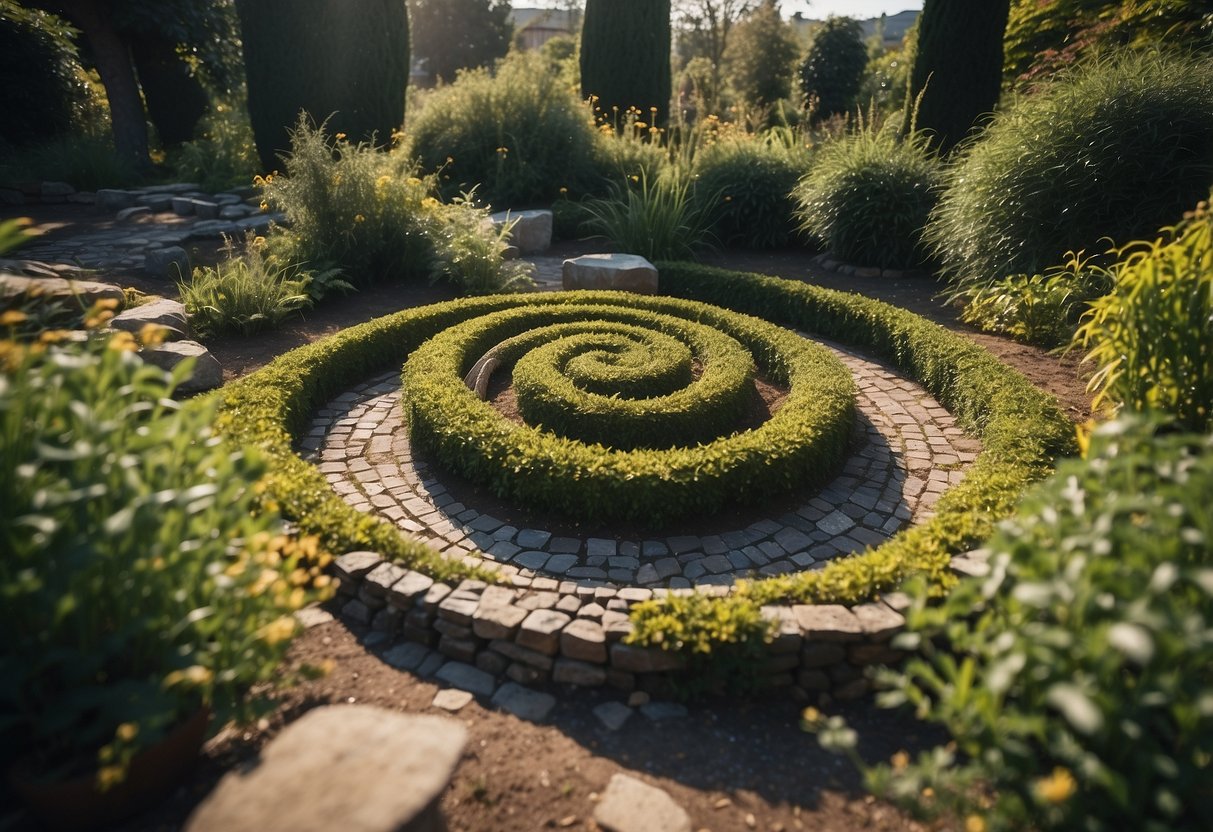
A herb spiral is a great way to use vertical space in your garden. It’s a raised garden bed shaped like a spiral, and it’s perfect for growing herbs.
You can build it using materials like bricks or stones. Fill the gaps with gravel or rubble for stability.
Herbs such as rosemary, thyme, and sage thrive in the upper, sunnier parts. Parsley and chives do well in the lower, shadier sections. A herb spiral can add interest and function to your garden.
3) Zen Sand Garden
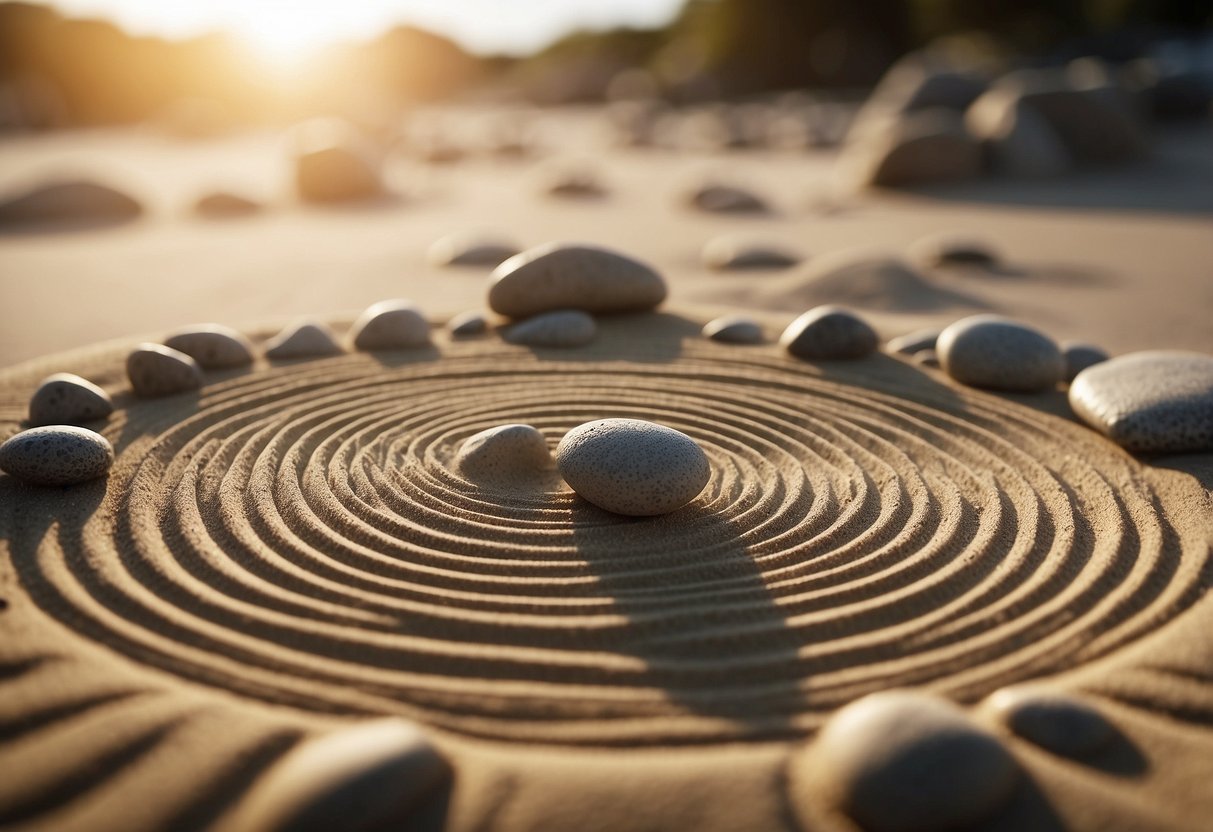
A Zen sand garden is perfect for a no-flowers garden idea.
You can use sand and gravel to create beautiful, soothing designs. Rake patterns in the sand to represent waves, and place stones to symbolize mountains.
Adding a miniature stone bridge or a small water feature can enhance the peaceful atmosphere.
Use simple elements to create a space for meditation and relaxation in your garden.
4) Container Vegetable Garden

Growing vegetables in containers is a fun way to have fresh produce right at your doorstep. You can plant a variety of veggies in pots, such as tomatoes, lettuce, and peppers. This is perfect if you have limited space.
You can also use different types of containers like window boxes, small pots, and hanging baskets. Just make sure they have good drainage. Using an organic potting mix will help your plants thrive.
To learn more about what vegetables work well in containers, check out this guide on container gardening.
5) Gravel Patio Garden
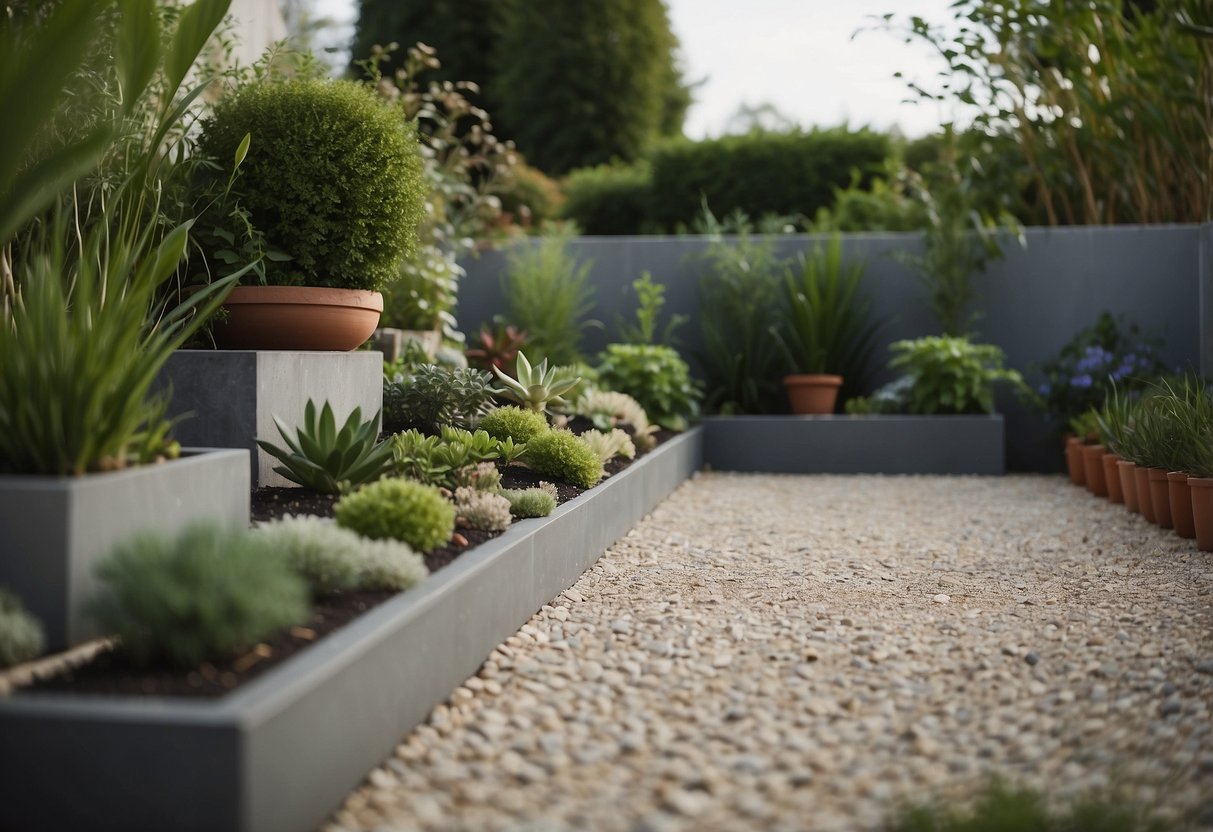
A gravel patio garden is perfect if you want a clean and stylish look. It’s easy to set up and maintain.
You can use bricks or stones to create the outer border. This keeps the gravel in place and makes it look neat.
Add some comfy seating and maybe a small table. It’s a great spot to relax and enjoy the outdoors.
Choosing the right plants is key. Low-maintenance options like succulents work well. Plus, they look great with gravel.
Lay down some landscaping fabric before adding the gravel. This helps prevent weeds from popping up.
6) Moss Garden

A moss garden adds a unique and tranquil touch to your space. Moss is low-maintenance and thrives in shaded areas.
Before planting, get rid of debris and weeds to give moss a good start. Smooth and dampen the soil. Moss grows better on a solid base.
You can also grow moss on trees by transplanting bits close to the trunk. This creates a lush, green look that enhances any garden.
For a refined touch, consider using moss-decorated stepping stones. They’re easy to make and look beautiful.
7) Shade Garden

Shade gardens can thrive even without traditional flowers. Choose plants with interesting textures and colors to create visual appeal.
Hostas, known for their variety in sizes and hues, are a great choice. They are low-maintenance and perfect for shady spots.
You can also add ferns, which bring a lush, green look to your space. Try combining these with plants like elephant ears or Persian shield for vibrant foliage.
For an extra touch, incorporate some shade-loving perennials like foxglove or columbine. These plants can add different heights and dimensions to your space.
Consider using elements like a propped canvas to create even more shade, giving your plants the perfect environment to grow.
Mix different plants to keep things interesting and make your garden a cool, inviting spot.
8) Stone Pathway
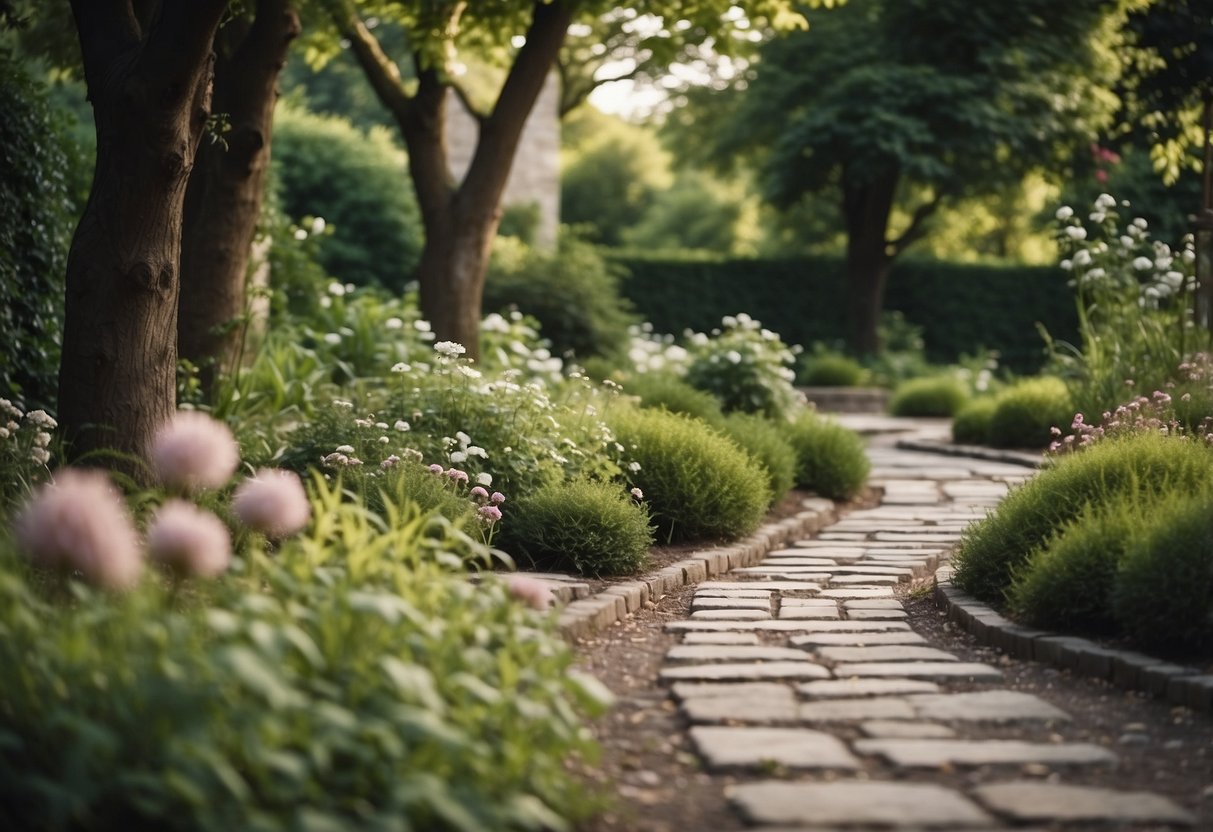
A stone pathway can bring a touch of elegance to your garden. Stones come in many shapes and sizes, making it easy to create a unique look.
Using flagstones or stepping stones can guide visitors through your space. Place larger stones in key areas and fill in gaps with pebbles.
Large, irregular stones can create a charming path, perfect for a cottage-style garden. You don’t need flowers to make it beautiful.
9) Water Feature Garden

A water feature garden can be a peaceful and eye-catching choice for a no-flowers garden. You can include elements like ponds, fountains, or narrow pools.
A small stand-alone pond is simple to install and maintain with ready-to-assemble kits. You can also add spouting fountains or self-contained fountains to create a soothing sound and a relaxing atmosphere.
Modern garden pools can add a sleek and bold look to your space. These features can be paired with repeating clusters of plants like evergreens to create a calming, symmetrical design. Explore more ideas here.
10) Cacti Arrangement
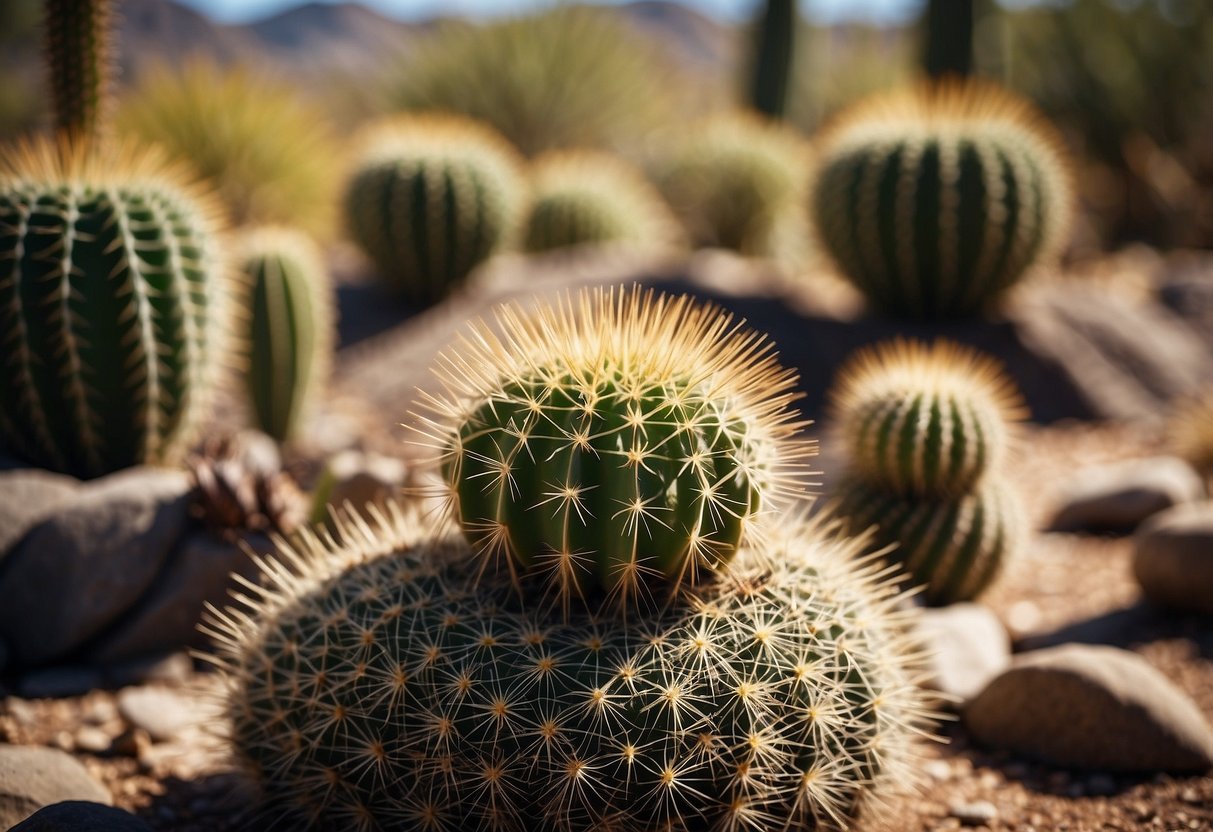
Cacti are perfect for a no-flowers garden. They come in many shapes and sizes, adding variety and interest.
Try placing different types of cacti together. For example, you might mix tall ones like the saguaro with shorter, round ones like the barrel cactus.
Use decorative elements like colorful rocks or glass balls to make the arrangement more lively. This can make your cactus garden pop with personality and charm.
Consider using containers like teacups for small cacti. This adds a cute and quirky touch to your garden. Arrange them on a windowsill or tabletop for a unique look.
Experiment and enjoy the process!
Design Considerations

Creating a no flowers garden involves careful planning. You need to choose a theme, select appropriate hardscape elements, and incorporate art and decor to ensure a visually appealing space.
Choosing a Theme
Picking a theme helps set the overall tone for your garden. Themes can range from minimalist Zen gardens to vibrant desert landscapes. A minimalist theme focuses on simple, clean lines and natural materials like stone and wood.
For a desert landscape, think about using various types of rocks, sand, and succulents. If you prefer something more playful, a whimsical theme with colorful sculptures could be ideal. Whatever theme you choose, make sure it reflects your personal taste and complements your home’s architecture.
Selecting Hardscape Elements
Hardscape elements become crucial in a no-flower garden. These include patios, walkways, and retaining walls. Patios made of materials like stone or concrete serve as excellent gathering spots. Walkways can guide visitors through different sections of the garden and add structural beauty.
Retaining walls not only help with elevation changes but also offer seating options. Consider using gravel or decomposed granite to create visual contrast and reduce maintenance. Using different shades and textures in your hardscape can make the garden more dynamic and interesting.
Incorporating Art and Decor
Art and decor play a significant role in enhancing a no-flower garden. Think about adding sculpture pieces, ceramic pots, or even a small water fountain. Garden sculptures can serve as focal points and bring a unique character to your space. Ceramic pots filled with interesting objects or low-maintenance plants like succulents can add pops of color.
For something serene, consider a small water fountain that provides a soothing sound. Wind chimes and outdoor lighting can also add to the ambiance. Strategic placement of these elements ensures they blend well with the overall theme and hardscape features, creating a cohesive look.
Alternative Plant Choices
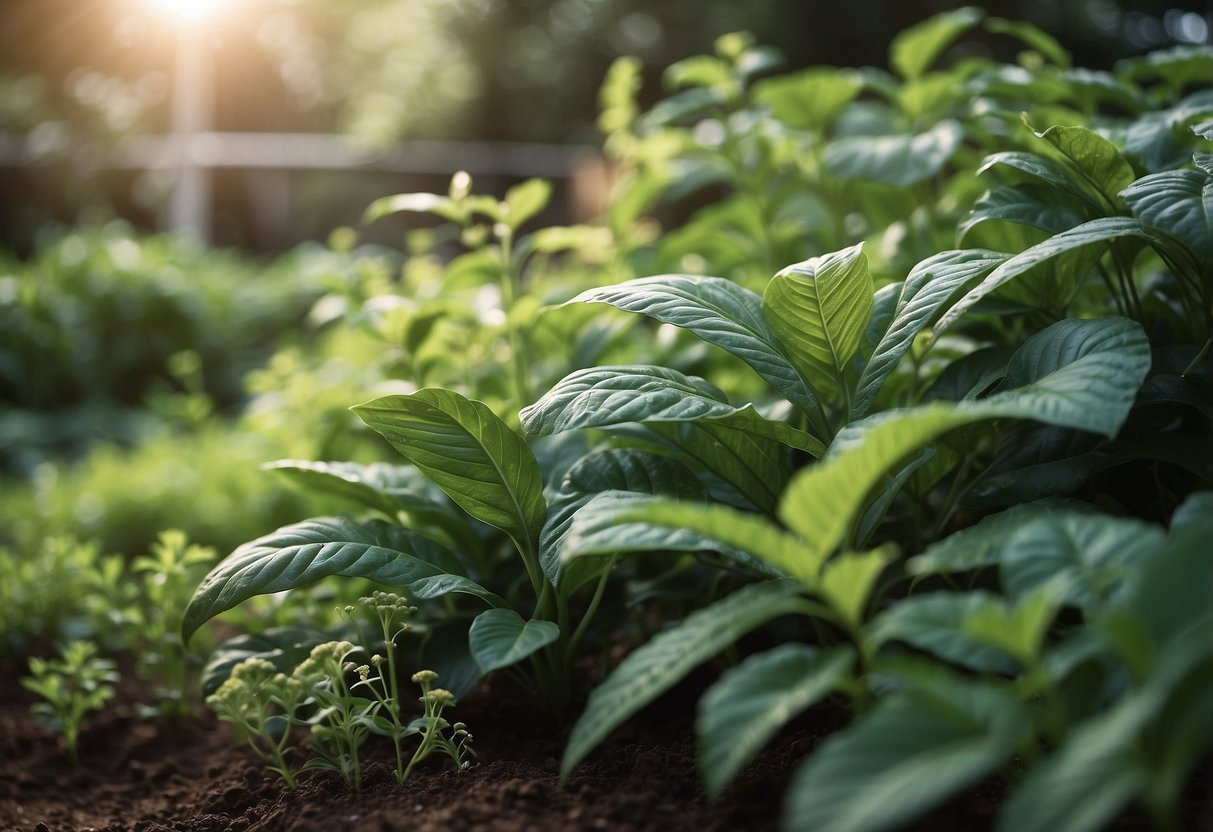
If you want a no-flowers garden, there are plenty of interesting options. You can use foliage plants, integrate edible gardens, or focus on drought-resistant choices to create a stunning space.
Using Foliage Plants
Foliage plants offer striking colors and textures. Their leaves come in shades of green, red, purple, and even silver. Varieties like hostas, ferns, and caladiums can create visual interest without flowers. Hostas are great for shady spots, while caladiums bring vibrant colors to your garden. Ferns can cover ground areas and add lushness. Mix large-leaf plants with smaller ones to add depth. This way, your garden remains attractive throughout the year with minimal effort.
Edible Gardens
Turning your garden into an edible oasis can be both practical and beautiful. Incorporate plants like herbs, vegetables, and fruit-bearing shrubs. Herbs such as basil, rosemary, and thyme not only taste good but look nice, too. Vegetables like kale, lettuce, and cabbage have striking colors and shapes. You can also plant fruit-bearing shrubs like blueberries or raspberries for added texture and color. These plants will add function to your garden and provide fresh produce for your kitchen.
Drought-Resistant Options
Choosing drought-resistant plants ensures your garden thrives, especially in areas with limited water. Succulents and cacti are popular choices due to their unique shapes and low-maintenance needs. You can also include plants like lavender, sage, and sedum. Lavender offers a lovely scent and purple hue. Sage has soft, grayish leaves that complement many garden styles. Sedum comes in various colors and grows well across different conditions. These plants help save water while keeping your garden lively and green.
Maintenance Tips

Keeping a no-flowers garden looking great involves focusing on soil care and managing weeds effectively. Healthy soil and a weed-free space ensure that your plants thrive and your garden looks neat.
Soil Care
Healthy soil is the foundation of any great garden. Regularly test your soil to check pH levels and nutrient content. This helps you know what amendments might be needed.
Add compost or organic matter to improve soil structure and provide nutrients. It’s best to do this in the spring or fall when it’s easier to work the soil.
Mulching is another vital step. It helps retain moisture, regulate temperature, and adds organic material as it decomposes. Use materials like wood chips, straw, or leaves.
Avoid compacting the soil by walking on garden beds. Use designated paths to keep soil loose, which helps plants grow better.
Finally, consider using cover crops during the offseason. They protect and enrich your soil by preventing erosion and adding organic matter.
Weed Management
Weeds can quickly take over and ruin your garden. Regularly inspect your garden and remove any weeds you see. It’s easier to pull them when they’re young.
Mulching again plays a crucial role here. A thick layer of mulch can suppress weed growth by blocking sunlight.
For persistent weeds, try using landscape fabric beneath the mulch. It provides an additional barrier that makes it harder for weeds to reach the surface.
Hand weeding is effective but takes time. If you prefer less labor, consider using natural herbicides or vinegar solutions for spot treatments.
If the weeds are too overwhelming, you might want to solarize the soil. Cover the area with clear plastic to trap heat and kill the weeds over several weeks.
Remember, consistent efforts make weed control easier in the long run.







